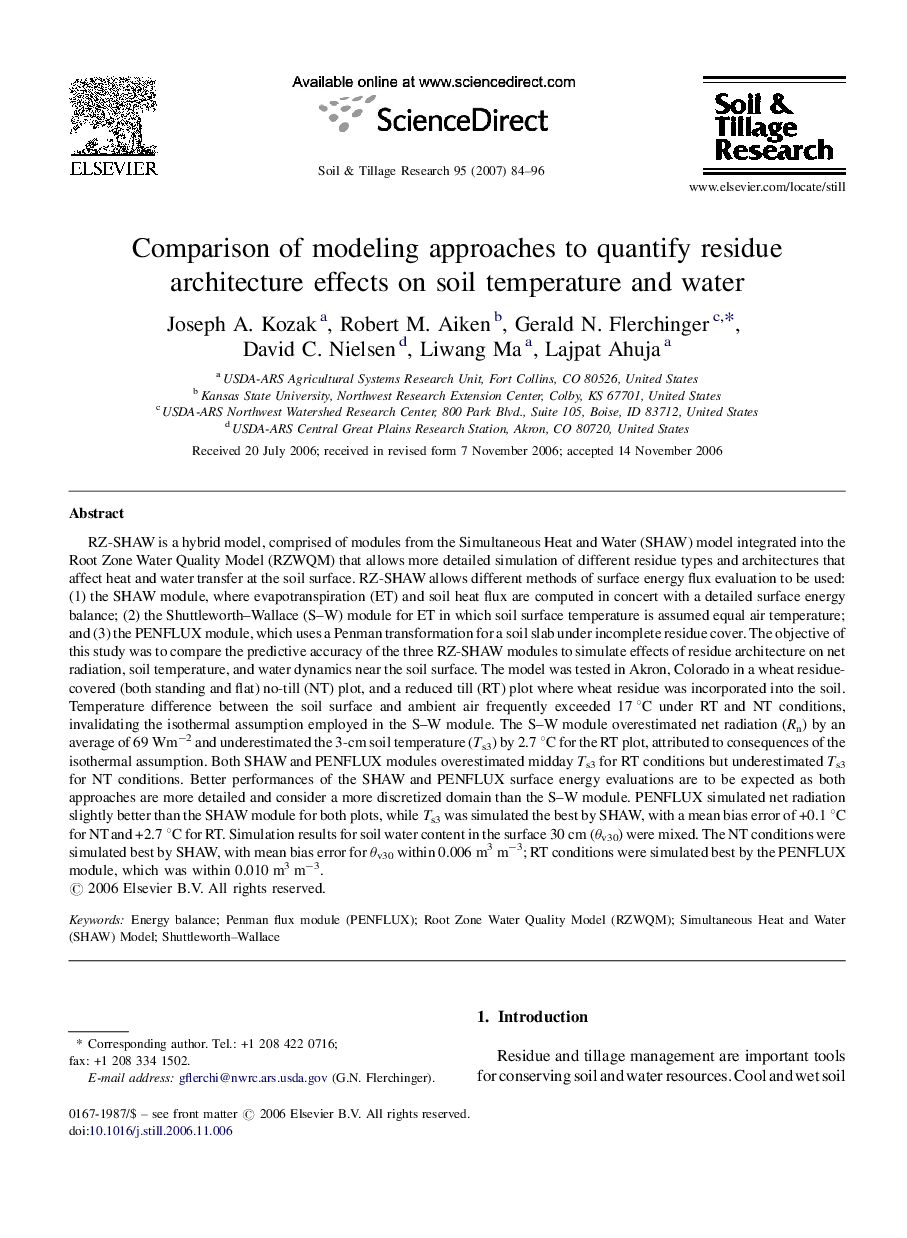| کد مقاله | کد نشریه | سال انتشار | مقاله انگلیسی | نسخه تمام متن |
|---|---|---|---|---|
| 306682 | 513109 | 2007 | 13 صفحه PDF | دانلود رایگان |

RZ-SHAW is a hybrid model, comprised of modules from the Simultaneous Heat and Water (SHAW) model integrated into the Root Zone Water Quality Model (RZWQM) that allows more detailed simulation of different residue types and architectures that affect heat and water transfer at the soil surface. RZ-SHAW allows different methods of surface energy flux evaluation to be used: (1) the SHAW module, where evapotranspiration (ET) and soil heat flux are computed in concert with a detailed surface energy balance; (2) the Shuttleworth–Wallace (S–W) module for ET in which soil surface temperature is assumed equal air temperature; and (3) the PENFLUX module, which uses a Penman transformation for a soil slab under incomplete residue cover. The objective of this study was to compare the predictive accuracy of the three RZ-SHAW modules to simulate effects of residue architecture on net radiation, soil temperature, and water dynamics near the soil surface. The model was tested in Akron, Colorado in a wheat residue-covered (both standing and flat) no-till (NT) plot, and a reduced till (RT) plot where wheat residue was incorporated into the soil. Temperature difference between the soil surface and ambient air frequently exceeded 17 °C under RT and NT conditions, invalidating the isothermal assumption employed in the S–W module. The S–W module overestimated net radiation (Rn) by an average of 69 Wm−2 and underestimated the 3-cm soil temperature (Ts3) by 2.7 °C for the RT plot, attributed to consequences of the isothermal assumption. Both SHAW and PENFLUX modules overestimated midday Ts3 for RT conditions but underestimated Ts3 for NT conditions. Better performances of the SHAW and PENFLUX surface energy evaluations are to be expected as both approaches are more detailed and consider a more discretized domain than the S–W module. PENFLUX simulated net radiation slightly better than the SHAW module for both plots, while Ts3 was simulated the best by SHAW, with a mean bias error of +0.1 °C for NT and +2.7 °C for RT. Simulation results for soil water content in the surface 30 cm (θv30) were mixed. The NT conditions were simulated best by SHAW, with mean bias error for θv30 within 0.006 m3 m−3; RT conditions were simulated best by the PENFLUX module, which was within 0.010 m3 m−3.
Journal: Soil and Tillage Research - Volume 95, Issues 1–2, September 2007, Pages 84–96